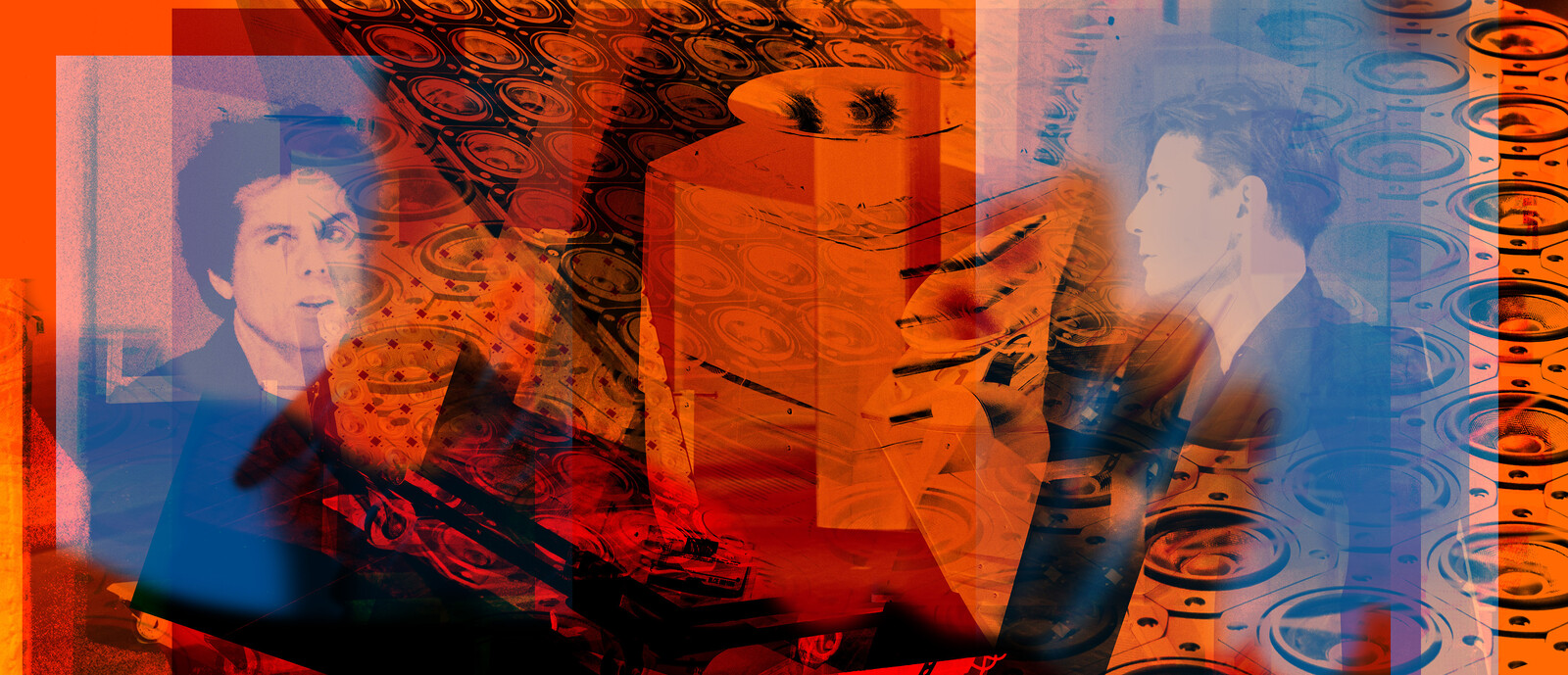Spatial Jitter
April 9–September 18, 2022
Luisenstraße 33
80333 Munich
Germany
Mouse on Mars is one of Germany’s most eccentric and remarkable electronic music projects. With an anarchic hybrid sound swinging between uncontrolled chaos and meticulously arranged structures, Andi Toma and Jan St. Werner have created a unique musical idiom that nonetheless never settles into definite form—too unpredictable are the myriad modifications they continually implement. Unconstrained by schools of thought, conventions of genre, and the pressures of the music industry, they are charting their own very distinctive trajectory through the no-man’s-land between pop, art, club culture, and the musical avant-garde.
Mouse on Mars take over the Kunstbau with a sound installation for which they developed the site-specific composition Spatial Jitter. Working with and responding to the exhibition space, the installation transforms the Kunstbau itself into a gigantic stereophonic acoustic instrument.
A rotatable horn loudspeaker pitchforks a sound like a pinball into the 110-yard Kunstbau, where it rebounds on the pillars, cants, splinters, is gathered back in, and dies down. One by one, additional sounds from a virtually inexhaustible repertoire are sent out into the space and modulated. Percussive devices operated by robots interject analog acoustic accents.
Sequences of different lengths are continuously rearranged so that no two of them recur in the same order. The audience experiences the orchestrated unfolding of a dynamic composition in three dimensions. The space and the sounds generated from it clash and respond to each other, resulting in an acoustic dialogue. A dedicated illumination program is coordinated with the music, seconding the sonic movements and sometimes standing in for them.
The installation intends to challenge the audience to active listening, in which only the limits of attention determine the limits of what is acoustically possible. With targeted shifts of perspective, Mouse on Mars propose to demonstrate their conviction that there is no one valid composition: each listener produces his or her own “spatial compostruction.”
Mouse on Mars have continually evolved their practice for almost 30 years, always asking new questions. The “compostruction” is part of their most recent acoustic research, inquiring both into the movement of sounds through time and space and aspects of psychoacoustic perception and the experience of sound: How can we define hearing and listening? How do we process acoustic information? How do our bodies respond to the physical movements of sound in space? How attentively can we observe the process of hearing itself? And in which other ways do we relate to our acoustic environment?
The accompanying program is developed in collaboration with BR / Hörspiel, Dokumentation, Medienkunst and the Dynamische Akustische Forschung (DAF).
Along with the exhibition a LP will be published accompanied by a publication; with contributions by Louis Chude-Sokei, Helga de la Motte-Haber, Eva Huttenlauch, Mouse on Mars, Patricia Reed, Susanne Witzgall
Curated by Eva Huttenlauch.
Events in the context of the exhibition:
June 24
Performance, “Spaint Chords”
July 29
Performance, “RDD”
In the framework of Technobodies
To coincide with their individual exhibitions, the Munich-based institutions Lenbachhaus, Haus der Kunst, and Museum Brandhorst collaborate on a long weekend of public programs. Technobodies focuses on the impact of new technologies on visual and sonic art. Starting from discourses rooted in the 1960s and ’70s, Technobodies explores the relationship between human bodies and technologies today.
September 9
Concert by Mouse on Mars at Ampere, Muffatwerk



